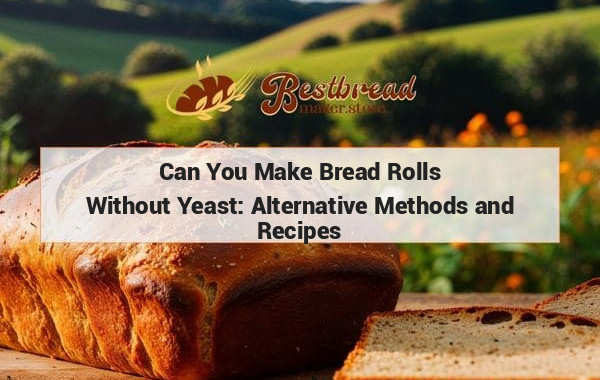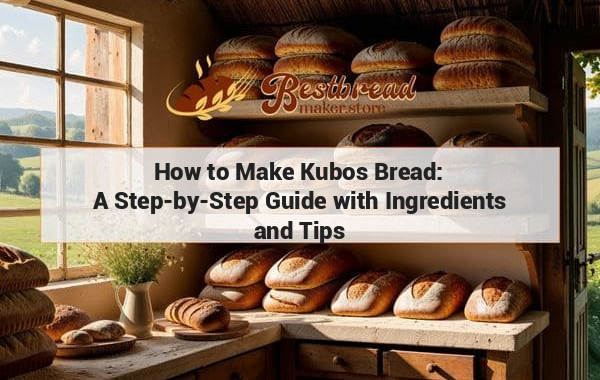Bread Maker Crescent Rolls Recipe with Step-by-Step Instructions
Make delicious crescent rolls with your bread maker for a quick and easy snack or side dish. Simply prepare the dough in your bread maker, shape it into crescent rolls, and bake until golden brown. Enjoy the homemade taste and fluffy texture that only a bread maker can provide. Perfect for any occasion, these crescent rolls will quickly become a family favorite. Try making them today!
Bread maker crescent rolls are a simple, delicious way to bake fresh, flaky crescent rolls at home. Using a bread maker takes the guesswork out of mixing and kneading the dough, allowing you to focus on shaping and baking these delightful rolls. Below, we explore how to make crescent rolls in a bread maker, share tips for perfecting the process, and look at how different features of bread makers can enhance your baking experience.
Key Takeaways:
Making crescent rolls in a bread maker simplifies the process, ensuring consistent dough results. Use a bread maker with dough settings, and follow recommended rising and baking techniques for fluffy, golden crescent rolls.
How to Make Crescent Rolls in a Bread Maker
Using a bread maker to create crescent rolls is an easy and convenient method for both experienced bakers and beginners. Most bread makers have a dough setting specifically designed for mixing and kneading dough to the perfect consistency.
Step 1: Gather Ingredients For classic crescent rolls, you’ll need basic ingredients such as flour, yeast, sugar, salt, butter, and milk. Ensure you measure out each ingredient accurately for the best results. Some recipes also include egg for added richness.
Step 2: Add Ingredients to the Bread Maker Follow the bread maker’s instructions for adding ingredients in the correct order. Typically, liquids go in first, followed by dry ingredients, and the yeast is added last to prevent premature activation.
Step 3: Select the Dough Setting Set your bread maker to the dough cycle. This setting will mix and knead the dough to the ideal consistency, after which the machine will let it rise until it doubles in size. The process typically takes about 90 minutes, but time may vary depending on your machine.
Step 4: Shape the Crescent Rolls Once the dough is ready, remove it from the bread maker and divide it into equal portions. Roll each portion into a circle and cut into triangles. Roll each triangle from the wide end to the point, creating the classic crescent shape.
Step 5: Let the Rolls Rise Place the shaped rolls on a baking sheet and cover with a towel. Let them rise in a warm place for 30 to 45 minutes or until they have doubled in size. This step is crucial for achieving fluffy, soft rolls.
Step 6: Bake the Crescent Rolls Preheat your oven to 375°F (190°C) and bake the crescent rolls for 10 to 12 minutes or until golden brown. Brush the tops with melted butter after baking for an extra layer of flavor.
Features of a Bread Maker for Crescent Rolls
Not all bread makers are the same, and certain features can significantly enhance your experience when making crescent rolls.
Dough Setting: Look for a bread maker with a dough cycle. This setting is designed to mix, knead, and allow the dough to rise without baking it, making it perfect for recipes like crescent rolls.
Programmable Timer: A bread maker with a programmable timer allows you to set the machine in advance. This feature is especially handy if you want to prepare dough overnight or while you’re busy with other tasks.
Capacity: The size of the bread maker matters, particularly if you plan to make large batches of dough. A 2-pound capacity machine is ideal for family-sized batches of crescent rolls.
Non-Stick Pan: A non-stick pan in your bread maker ensures that the dough comes out easily, preventing it from sticking to the sides or bottom of the machine.
Quality of Kneading Blades: High-quality kneading blades are essential for evenly mixing and kneading dough. This is especially important for achieving the correct texture and consistency needed for soft, flaky crescent rolls.
Bread Maker Crescent Rolls vs. Traditional Method
While making crescent rolls by hand can be satisfying, using a bread maker saves time and effort. Here’s a comparison between the two methods:
Time Efficiency: A bread maker handles the mixing, kneading, and first rise of the dough, freeing up your time for other tasks. By contrast, the traditional method requires constant attention during these stages.
Consistency: Bread makers are designed to mix and knead dough evenly, reducing the risk of errors like under-kneading or over-proofing, which can affect the texture of the rolls.
Ease of Use: For those new to baking, a bread maker simplifies the process by automating the technical parts of dough preparation. This ease of use is one of the primary reasons why many home bakers prefer using a bread maker for crescent rolls and other types of dough-based recipes.
Variations and Add-Ons for Bread Maker Crescent Rolls
Once you’ve mastered the basic crescent roll recipe, you can experiment with different variations and fillings to customize your rolls.
Cheese-Stuffed Crescent Rolls: Add a slice of cheese to each triangle of dough before rolling it into the crescent shape. Bake as usual for a gooey, cheesy center.
Garlic Butter Crescent Rolls: Before baking, brush the tops of the rolls with garlic butter and sprinkle with parsley. This savory twist is perfect for serving alongside pasta dishes or soups.
Sweet Crescent Rolls: For a sweeter version, brush the rolled dough with melted butter and sprinkle with cinnamon and sugar before baking. This variation works well as a breakfast treat or dessert.
Choosing the Right Bread Maker for Crescent Rolls
When it comes to choosing the best bread maker for crescent rolls, there are a few key factors to consider. The right machine will make a significant difference in the quality and ease of preparation.
Size and Capacity: As mentioned earlier, a bread maker with at least a 2-pound capacity is ideal for making large batches of dough. If you frequently bake for a crowd, consider a machine with a larger capacity.
Customizable Settings: A bread maker with customizable settings allows you to adjust the kneading and rising times. This flexibility is useful for ensuring your dough is perfectly prepared for crescent rolls.
Durability and Warranty: Invest in a durable bread maker from a reputable brand. Look for machines that come with a warranty to protect your investment in case of mechanical issues.
For an excellent selection of high-quality bread makers, check out bestbreadmaker.store where you can find reviews and recommendations tailored to your baking needs.
Frequently Asked Questions (FAQs)
1. Can I make gluten-free crescent rolls in a bread maker? Yes, you can make gluten-free crescent rolls by using gluten-free flour. Many bread makers also have a gluten-free setting that adjusts the kneading and rising process to accommodate the differences in gluten-free dough.
2. Why do my crescent rolls come out too dense? If your crescent rolls are dense, it could be due to under-kneading or not allowing enough time for the dough to rise. Make sure your bread maker's dough setting runs for the full cycle, and always let the rolls rise a second time before baking.
3. Can I freeze bread maker crescent rolls? Yes, you can freeze unbaked crescent rolls. After shaping the rolls, freeze them on a baking sheet, then transfer to a freezer bag. When ready to bake, allow them to thaw and rise before placing them in the oven.
4. Do I need to grease the bread maker pan? Most bread maker pans are non-stick, so greasing isn’t necessary. However, if your dough tends to stick, you can lightly spray the pan with a non-stick cooking spray before adding the ingredients.
5. How long can I leave dough in the bread maker after the dough cycle ends? It’s best to remove the dough shortly after the cycle ends to prevent over-proofing. If you need to leave it for longer, try not to exceed 30 minutes to maintain the best dough consistency.
By following these tips and understanding how to make crescent rolls using a bread maker, you can achieve bakery-quality results in your own kitchen.








